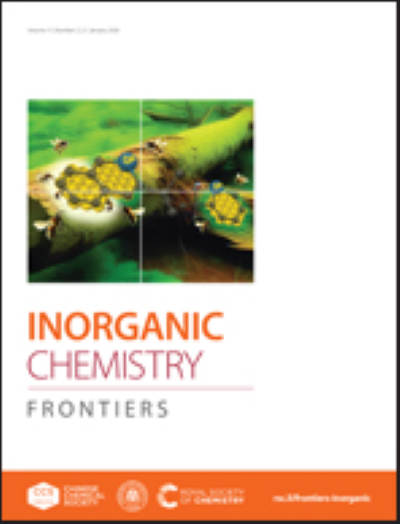Cu3Zn表面上CO2还原成C2产物的机理:阶梯表面和Zn原子的作用
IF 6.4
1区 化学
Q1 CHEMISTRY, INORGANIC & NUCLEAR
引用次数: 0
摘要
二氧化碳的电化学还原是将二氧化碳转化为有价值的化学品和燃料的关键技术,解决了环境和能源挑战。在本研究中,我们采用密度泛函理论(DFT)和显式溶剂模型,研究了cu - zn比为3:1 (Cu3Zn)的CuZn合金表面CO2还原为C2产物的机理。我们研究了阶梯式表面特征和锌的存在如何影响反应途径。我们的模拟表明,表面表面和Zn在稳定关键反应中间体、促进C-C偶联以及乙醇和乙烯之间的选择性转向方面发挥了重要作用。具体来说,由于锌和台阶表面的共同作用,台阶表面,特别是(221)面,对乙醇表现出增强的反应性和选择性。这些因素促进了*CO-*CH偶联反应,稳定了*CH3CH2O,比*CH2CH2OH更有效地生成乙醇,从而生成乙烯。相反,平坦的(111)表面缺乏这些阶梯特征,倾向于通过不同的反应途径生成乙烯。总的来说,这项研究为阶梯式表面和Zn如何影响Cu3Zn合金中乙醇和乙烯的选择性提供了有价值的见解。这些见解对于设计更高效、更有选择性的催化剂来生产有价值的C2化学品至关重要。本文章由计算机程序翻译,如有差异,请以英文原文为准。
Mechanistic Insights into CO2 Reduction to C2 Products on Cu3Zn Surfaces: The Role of Stepped Surfaces and Zn Atoms
The electrochemical reduction of CO2 is a key technology for converting CO2 into valuable chemicals and fuels, addressing both environmental and energy challenges. In this study, we employ density functional theory (DFT) with an explicit solvent model to investigate the mechanisms of CO2 reduction to C2 products on CuZn alloy surfaces with a 3:1 Cu-to-Zn ratio (Cu3Zn). We investigate how stepped surface features and the presence of Zn influence the reaction pathways. Our simulations reveal that both surface facets and Zn play significant roles in stabilizing key reaction intermediates, facilitating C-C coupling, and steering selectivity between ethanol and ethylene. Specifically, stepped surfaces, particularly the (221) facet, exhibit enhanced reactivity and selectivity for ethanol, due to the combined effects of Zn and stepped surface. These factors promote the *CO-*CH coupling reaction and stabilize *CH3CH2O, leading to ethanol more effectively than *CH2CH2OH, which results in ethylene. In contrast, the flat (111) surface, which lacks these stepped features, tends to favor ethylene formation through a different reaction pathway. Overall, this study provides valuable insights into how stepped surfaces and Zn affect ethanol and ethylene selectivity in the Cu3Zn alloy. These insights are crucial for designing more efficient and selective catalysts for producing valuable C2 chemicals.
求助全文
通过发布文献求助,成功后即可免费获取论文全文。
去求助
来源期刊

Inorganic Chemistry Frontiers
CHEMISTRY, INORGANIC & NUCLEAR-
CiteScore
10.40
自引率
7.10%
发文量
587
审稿时长
1.2 months
期刊介绍:
The international, high quality journal for interdisciplinary research between inorganic chemistry and related subjects
 求助内容:
求助内容: 应助结果提醒方式:
应助结果提醒方式:


